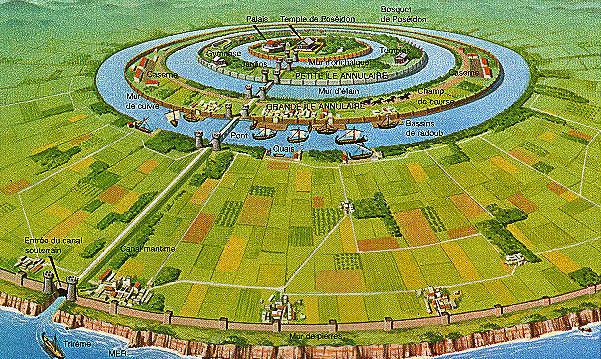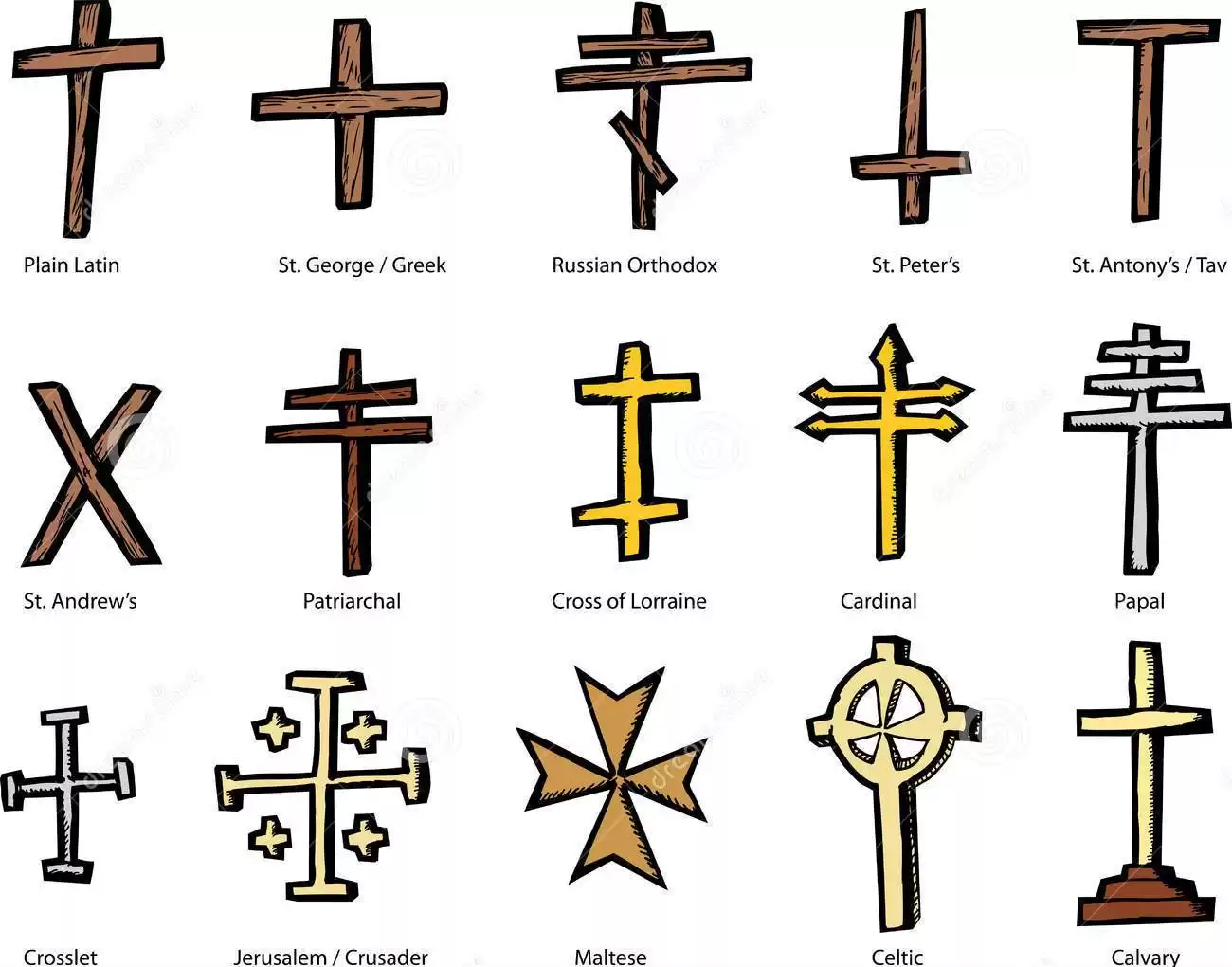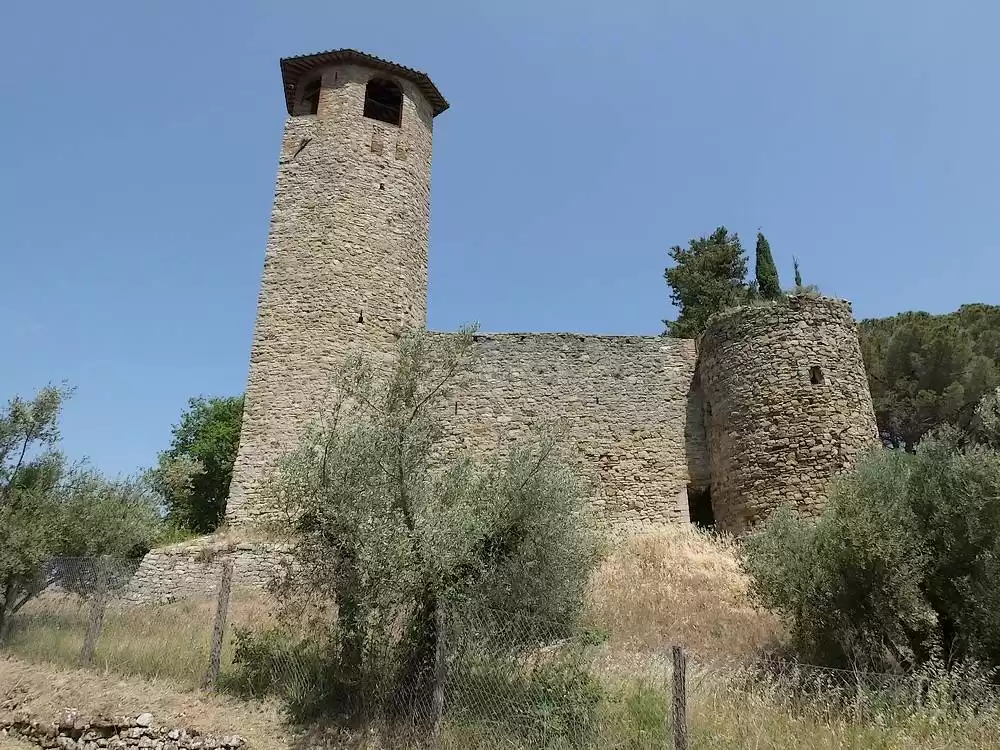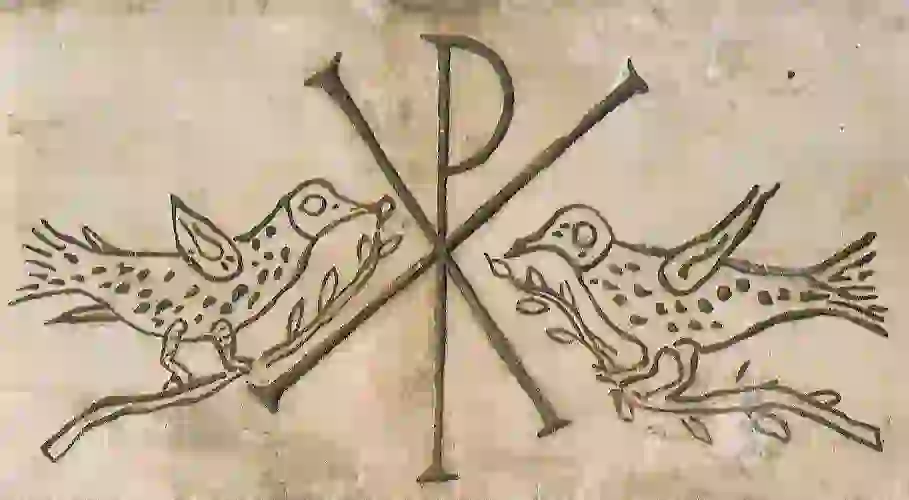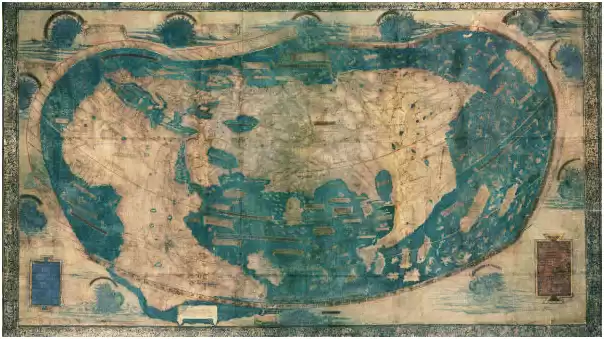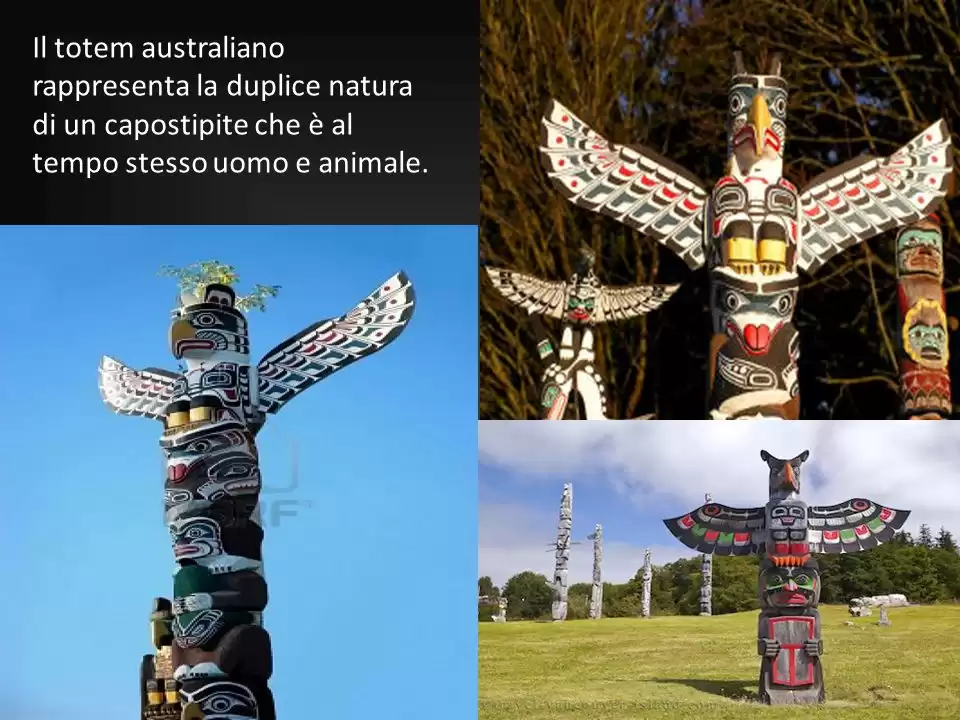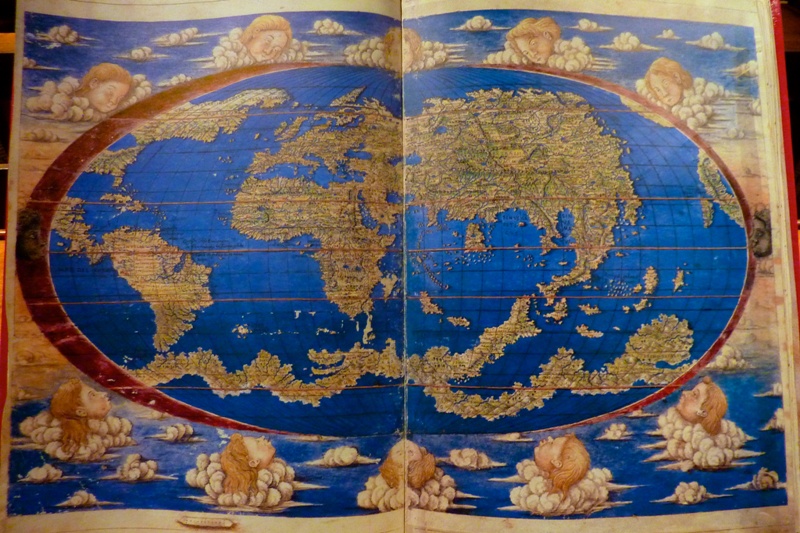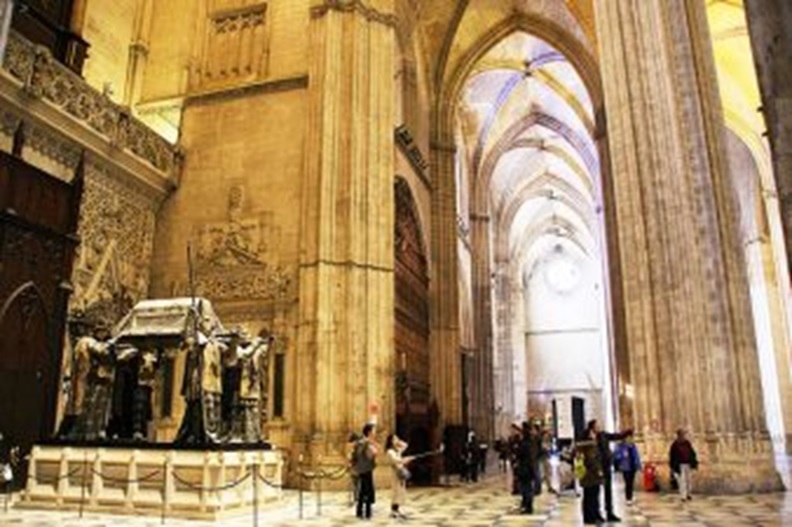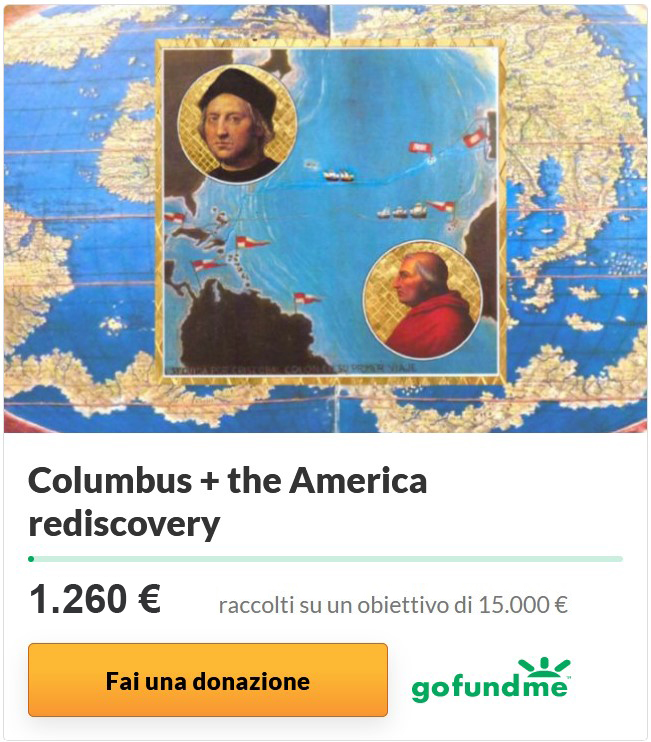Abstract
It is well known that Plato reports that three great catastrophes, due to water and fire, happened within human memory, an information that Solon got from a priest in Sais, Egypt. The oldest one was the Atlantis event, dated at 9000 years before Solon time, the last one was the Deucalion Flood, dated by Herodotus at 25 generations before the first Olympics, i.e. at about 1500 BC. The intermediate one is not discussed, but should be identified with the Noachian Flood. In the Mayan record it is stated that five ages existed, separated by four events called “creations”. The oldest one was associated to fire and wind, and appears to predate the Atlantis event. We propose, apparently for the first time, an explanation of such first catastrophe, from the recent geological discovery that a large object impacted or exploded over the Great Lakes ice cover at about 10.900 BC. Then we analyze three expected effects of this event that provide a possible new explanation of the Biblical statements of Fiat lux, the Spirit flowing over the waters, the Logos.
1. The three catastrophes in Plato and the four ones in Mesoamerican records
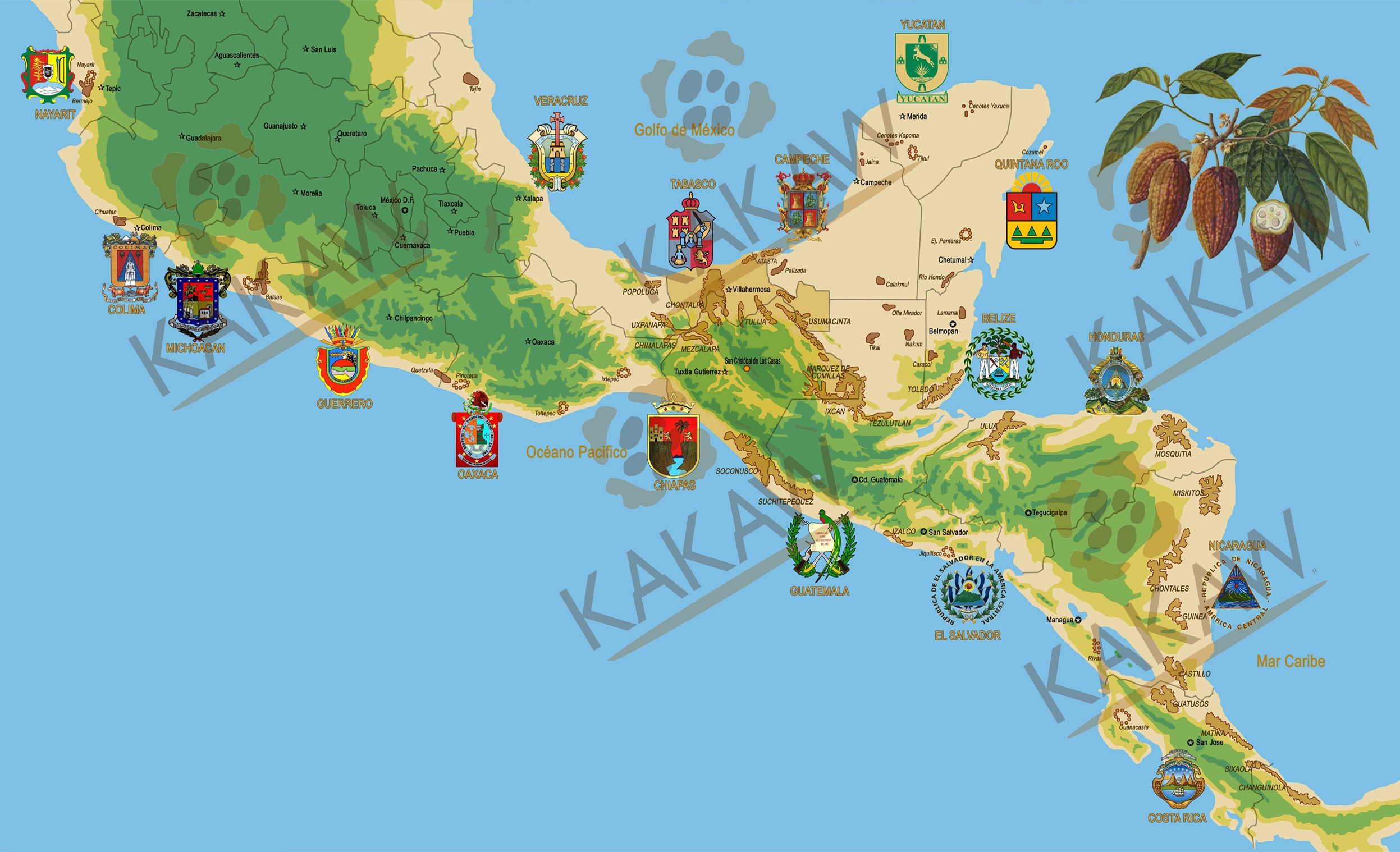 It is well known that Plato, in the books Critias and Timaeus, states that three great catastrophes affected mankind with fire and water, their cause being the action of celestial bodies. He attributes this information to Critias the Younger, a man aged 80 and a friend of Socrates. Critias got it as a boy 10 years old from his grandfather Dropides- He was a relative of Solon and knew the story from the great politician. Solon got the story in Egypt from a priest of Sais, the town in the delta with a school for priests. Letting apart other minor catastrophes, the three great ones presented by Plato are:
It is well known that Plato, in the books Critias and Timaeus, states that three great catastrophes affected mankind with fire and water, their cause being the action of celestial bodies. He attributes this information to Critias the Younger, a man aged 80 and a friend of Socrates. Critias got it as a boy 10 years old from his grandfather Dropides- He was a relative of Solon and knew the story from the great politician. Solon got the story in Egypt from a priest of Sais, the town in the delta with a school for priests. Letting apart other minor catastrophes, the three great ones presented by Plato are:
- The Atlantis event, dated at about 9.500 BC. In Spedicato (2010) it is argued that this event corresponds to the rapid end of the last Ice Age, at about 9450 BC, when most ice melted in perhaps only a few weeks, increasing the level of oceans by about a hundred meters. We propose as the cause of such a melting the passage close to Earth of a body P of large mass. The body lost most probably a satellite which became the Moon. Before capturing the Moon, Earth had Mars as its satellite, on an orbit of about one million km radius, where it looked slightly smaller than present Moon. Mars was lost about 2500 years later, due to the consequences of the impact of P on Jupiter. See Spedicato (2012, 2013).
- The Deucalion event, a flood that destroyed much of the coastal areas of Mediterranean and in particular of Greece. The flood was dated by Herodotus at 25 generations before the first Olympics, and was claimed by Orosius, in Wars against pagans, to have occurred more or less at the time of the Exodus events, of Dionysus war against India, of climatic changes and of great migrations. From the Biblical statement that Exodus occurred 480 years before work started on building the Jerusalem temple, and from other geologic arguments, see Spedicato (2010), the Deucalion Flood can be accurately dated at about 1447 BC.
- The catastrophe between the two above events has no description in Plato, but should be the Biblical Flood. This catastrophe was survived by Noah in Urartu (possibly neither Ararat or Armenia, but the Manasarovar lake near mount Kailash in Tibet…), by Ziusudra or Utnapishtim on Mount Nimush, to be identified with the sacred mountain range of Anye Machen in north-east historical Tibet (the mountain that Gilgamesh reached in his second trip, see Spedicato (2003)), by Mannu in Montisola in lake Iseo… The date of the event can be accurately given at 3161 BC, namely at year 600 of the late Hebrew calendar, the calendar originating most probably from the birth date of Noah. The date can also be established from Toltec chronological statements, see Spedicato (2012, and this volume), using a chronological statement in the historian Fernando de Alvas Cortes Ixtilxochitl, partly of Aztec blood, see Zapp and Erisson (2002), who use material from his Relacion historica de la nation tulteca. It is a date some years after the end of the Mahabharata war and the death of Krishna, and possibly some 300 years after the Gyza pyramids were built, see Spedicato (2013)...
It is likely that if the Mayan codices, and those of other people as the Aztec or the Toltec, were not burned by bishop Diego de Landa, we would have a much better description of the catastrophes in the past that were memorized in some cases with incredible precision by the Mesoamerican people. What survives is however enough to provide significant information and to allow us to say that in Mesoamerica a catastrophe was memorized older then the oldest one of Plato, the Atlantis event. Incidentally we recall that, contrary to what most people believe, the Atlantis catastrophe was not transmitted only by Plato. Hellanicus wrote about it. Philolaus, chief of the Pythagorean school at time of Plato, sold to Plato at large cost three books; after buying them and possibly using some material from them, Plato wrote Timaeus. During the Panathenaic festival, that predates Plato by a long time according to Plutarch Life of Teseus, a description of the Atlantis war against Athens was carried painted on a peplum, according to a scholiast of the philosopher; similarly painted was the fight of Athena against Titans and Giants, see again Spedicato (2012) for an astronomic interpretation of these events, to be set at about 6900 BC, some 2500 years after the Atlantis event.
2. The five ages in Mesoamerican record and in Hesiod
In the Mayan record, which is also essentially the Aztec record, five ages appear, four catastrophes separating most probably such ages. Five ages remarkably appear also in one of Hesiod poems, The days and the works, Hesiod not discussing the nature of the separating events. The Hesiod ages are the following, as described in Wikipedia:
-
First age, or age of Gold. It was the time of Cronos, when men lived without worry, they were always young, they took their food from the surrounding without any need of work. They died as in a sleep and then became spirits protectors of men.
-
Second age or age of Silver. Men lived up to 100 years under mother control. Once grown up they were given to fighting and had no veneration of gods. Thus they were extinguished by Zeus and became demons of the lower world
-
Third age, or Bronze age. In this age men lived who were strong and violent, mainly interested in warring. They disappeared due to their violent nature, albeit they could not be defeated
-
Fourth age, or age of the heroes. Then men lived who were heroes, god-men or semigods, with better moral qualities than in the previous race. They fought in Troy and Thebes, where many of them died; others were brought from Zeus in the Islands of the Happy People, where they lived in peace in lands fertile and rich of sheep. No metal name is associated to this age
-
Fifth age or Iron age. This was the present age of Hesiod, where man lived suffering, with no justice and having to work to survive. No possibility of improvement was seen by Hesiod.
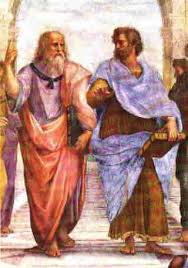 Of course it is impossible to provide a full explanation of the details given by Hesiod about the five ages, the origin of his information being lost. We may attempt the following partial explanation, and then relate it to the five Mesoamerican ages.
Of course it is impossible to provide a full explanation of the details given by Hesiod about the five ages, the origin of his information being lost. We may attempt the following partial explanation, and then relate it to the five Mesoamerican ages.
- The age of gold may be related to the happy times before the catastrophe of fire and wing that terminated the Clovis Era. It was a time when the rigor of the Ice Age was decreasing, men had developed better weapons and hunting techniques to catch the big animals that were roaming in great quantities in the green regions out of the iced areas. Such regions included the southern part of United States and Mexico, the present Sahara desert, the southern part of Europe, a large part of Asia including central and eastern Siberia and the present very dry regions between Caspian and the Pamirs and Tien Shans. Hunters who have plenty of animals to catch lead a happy life, spending most time resting and enjoying time with their women and families. Hunting was a pleasure as well as the life in their clans. The statement on their dying in sleep and becoming protector spirits is outside our explanation. But we can explain why they were young: simply because they died young, partly due to hunting accidents but mainly due to fighting between different clans or tribes. In a society living on hunting the population density cannot grow over a certain rather small density, otherwise game would disappear. In a healthy tribe with high birth rate the only remedy was then fighting the neighbors, a fact that characterized till now all hunting society (Amazon, New Guinea…), and that was also a means to select the strongest men.
- The silver age should correspond to the time between the Saginaw impact, at about 10.900 BC, and the end of Ice Age, including the end of Atlantis, at about 9500 BC. Due to the changed climatic conditions, this time being the very cold Younger Dryas period characterized by strong winds and frequent storms, it is natural to expect that the end of the happy conditions of the previous age led to a more difficult life, with intensified intertribal fighting. The extinguishing by Zeus may be understood by the likely fact that most humans were destroyed in the event terminating the Ice Age. We have claimed, see Spedicato (2010), that the cause was the close passage of body P, of mass possibly ten times our planet mass, see Spedicato (1913)... The close passage resulted, inter alia, in giant tsunamis that destroyed everything near the coasts, and in an increase of temperature, that killed humans not living either at high latitudes or on elevated mountains.
- The bronze age should comprise the period between the end of Ice Age, at about 9500 BC, and the Noachian flood, at 3161 BC. A period very dramatic, that saw Earth hit by material coming from Jupiter, after the giant planet was impacted by body P, see also Tollman A&E (1993). Then, around 5500 BC, we have the events described in Genesis and in Sumerian-Akkadian texts relating to the formation of special human couples, endowed, according to Atrahasis albeit Genesis is silent, with immortal soul. This period terminates, as strongly stated in Genesis, with violence. Consider eg the very destructive Mahabharata war that can be dated at about 3200 BC, and the presence of “giants”, or Nephilim, hybrids of humans and superior beings. This is a period where bronze weapons became to be used.
- The fourth age would comprise the period between the Noachian flood and the Deucalion flood, set at 1447 BC. Its final part was the time of Climatic Optimum, with olive growing in Scandinavia; following Vinci (2002) the Homeric epic should be set at the final time of this period and in the Baltic area. The island of the Happy People may related to a discovery of America, probably from navigators from south-east India, who reached the Nayarit coasts not long after the Noachian flood, possibly about the year 3114 BC that has been proposed as the beginning of the Mayan long computation.
- No more ages after the one beginning in about 1447 BC are given by Hesiod or by Plato or...
Five ages are also listed in Mesoamerica, see for instanced Townsend (2007), who also quotes the origin of the Aztec civilization in king Quetzalcoatl having been exiled (from India, it can be argued using Indian documents) to Mexico after in state of wine intoxication he had violated his sister. The five ages have the following qualification, starting from the earliest one:
- Sun-Jaguar
- Sun-Wind
- Sun-Rain
- Sun-Winter
- Sun-Rabbit
The interpretation of the above qualifications is not obvious, except possibly the second one. The second one suggests indeed the Younger Dryas period, characterized by strong winds (notice that Atlantis city was built in a location protected from the winds thanks to a nearby chain of mountains). If so, the first age would end at about 10.900 BC, with the Great Lakes impact to be considered in next section. The second age would end with the fast termination of Ice Age and destruction of Atlantis civilization, at about 9500 BC. The third age terminates with the Noachian flood, whose many days of rain would be better remembered, being closer in time, than the rains associated with the passage of body P at 9500 BC. The fourth age would end with the Deucalion flood, leading to the end of the Climatic Optimum. The fifth age would be the present one, starting at 1447 BC. The meaning of the rabbit is unclear to me, unless it refers to the high population of such animals in the American prairies that lasted till the arrival of white man. Rabbits were certainly one of the easiest catch for hunters and a safe reservoir of meat… Also the jaguar appearing in the first age has no clear explanation, unless we consider that at that age not only huge herbivores existed (mammoths, mastodonts et alia), but also huge carnivores, as the sabre toothed tiger. This large animal certainly had no fear of humans and might have been remembered as danger number one.
We believe that the above five ages correspond to Hesiod’s five ages. Hesiod stresses the qualities of the existing humans versus the natural features that are dominant in the Mesoamerican treatment, possibly since large and powerful animals existed in the Americas in higher quantities than in Europe at that time. That the ages were separated by catastrophes appears in accepted readings of the Aztec fifty pages Codex Telluriano-Remensis, see Spence (2027, 2008).
In the next section we consider the likely cause that ended the first age, the most ancient one. It is a catastrophic event that Popol Vuh defines as characterized by wind and fire, see Childress (2004), to be followed by the second age characterized by wind. Notice that Popol Vuh, the Mayan book that survived in Guatemala albeit in a translation into Spanish, insists more than in the five ages in the four discontinuities that separated them considered as four creations, see Gillette (1997). The book was found in its Spanish translation in a monastery of Chichicastenango, the small town beautifully located near lake Atitlan, where the local people, of Mayan stock, still speak Mayan dialects and preserve some of the old religious traditions. The book was first lost and then recovered in Ciudad de Guatemala in 1854; the first translation was given by Abbé de Brasseur in 1861. The catastrophic event is described as a black storm, with rain, darkness, cold, hail and snow. See Craveri (1998).
3. The end of the first Mesoamerican (and Hesiod’s) age
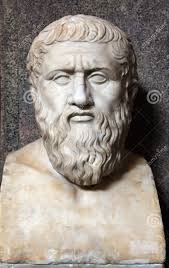 The event that we consider to have ended the first age, the age of gold in Hesiod, the age of jaguar in Mesoamerica, came to my attention in 2007 from scholar Leroy Ellenberger, noted for his initial connection with Immanuel Velikovsky and subsequently for his criticism of many of his ideas. I am indebted to Leroy for many information not easily available in Italy or Europe. Ellenberger informed about a geology conference where evidence was provided for an explosion of extraterrestrial origin over the Great Lakes region of US and Canada. The authors were researchers at the Laurence Livermore National Laboratory, in California, not far from Stanford University. The proposed catastrophe in the Great Lakes region has been dated at about 10.900 BC. It was probably the consequence of an almost tangential impact over the ices or of an explosion in the atmosphere close to the ices, as an event of the super Tunguska type. The event was first proposed at a 2006 AGU (American Geophysical Union) meeting in Baltimore and then redeveloped at the 2009 AGU Fall Meeting in San Francisco, by geologists Michael Davias, from Stamford University, and Jeanette Gilbride, from North Carolina State University. Further communications by them were given at later meetings, as at the 2010 GSA (Geological Society of America) meeting in Denver, the 2011 GSA Annual Meeting in Minneapolis, the 2012 GSA Northeastern Section Meeting in Hartford. The main concern of the above communications was that the event, due to a body coming from the direction of northern Europe, probably caused the formation of the Carolina Bays. These are oblong shallow lakes and ponds, numbering over 100.000, found in the northern half of the eastern US coast, mainly in the Carolinas and in New Jersey. Their size is from a few meters to several kilometers. Their proposed date for the event was initially estimated at about 40.000 years BP, a date unrelated to the end of the first Mayan age.
The event that we consider to have ended the first age, the age of gold in Hesiod, the age of jaguar in Mesoamerica, came to my attention in 2007 from scholar Leroy Ellenberger, noted for his initial connection with Immanuel Velikovsky and subsequently for his criticism of many of his ideas. I am indebted to Leroy for many information not easily available in Italy or Europe. Ellenberger informed about a geology conference where evidence was provided for an explosion of extraterrestrial origin over the Great Lakes region of US and Canada. The authors were researchers at the Laurence Livermore National Laboratory, in California, not far from Stanford University. The proposed catastrophe in the Great Lakes region has been dated at about 10.900 BC. It was probably the consequence of an almost tangential impact over the ices or of an explosion in the atmosphere close to the ices, as an event of the super Tunguska type. The event was first proposed at a 2006 AGU (American Geophysical Union) meeting in Baltimore and then redeveloped at the 2009 AGU Fall Meeting in San Francisco, by geologists Michael Davias, from Stamford University, and Jeanette Gilbride, from North Carolina State University. Further communications by them were given at later meetings, as at the 2010 GSA (Geological Society of America) meeting in Denver, the 2011 GSA Annual Meeting in Minneapolis, the 2012 GSA Northeastern Section Meeting in Hartford. The main concern of the above communications was that the event, due to a body coming from the direction of northern Europe, probably caused the formation of the Carolina Bays. These are oblong shallow lakes and ponds, numbering over 100.000, found in the northern half of the eastern US coast, mainly in the Carolinas and in New Jersey. Their size is from a few meters to several kilometers. Their proposed date for the event was initially estimated at about 40.000 years BP, a date unrelated to the end of the first Mayan age.
An independent proposal, with a dating acceptable in our contest, came on May 23rd, 2007, in Acapulco, by four scientists from the above quoted Livermore laboratory, see Firestone et al (2007). Their work was based upon analysis of carbon microspherules, nanodiamonds, soot, fullerenes, charcoal…. Found from Belgium to California, that indicated the explosion of a large body, possibly a partly decomposed comet or Apollo object, over the Great Lakes region. The point of the explosion cannot be determined with precision, since a similar explosion can generate only a temporary crater over the estimated layer of ice some 4 km deep in that area. It is deemed that the explosion took place in the Detroit-Chicago area. Radiocarbon dating indicates a likely date of about 10.900 BC for the event.
While criticisms has been leveled against the claim of the 10.900 BC event, it seems that acceptance of the event is increasing, despite a full modeling of the explosion and of its consequences is far from being established. So we consider at a qualitative level some expected consequences:
- Formation of a temporary crater in the ice under the explosion or impact point; no crater expected in the soil below
- Formation of a column of mainly ionized ice arising to great height possibly well over stratosphere
- Propagation of a heat wave associate to hot winds, with temperature possibly over one thousand degrees in the point of the event and still very high below the iced region, where existing vegetation would burn over million square kilometers
- Likely origin of the three million square km of partially burned vegetation that is called black mat, being found in large parts of southern US; this author was taken by scholar Evan Hansen to three quarries in the Escalante desert of Utah where the layer was well visible, a width of about ten cm, under about one meter of sediments. It had a blackish color and consisted partly of soot, partly of vegetation not completely burned (in case of fires over very large areas, the lack of oxygen makes impossible a full combustion of vegetation)
- In case the body was partly fragmented, formation of shallow craters where no ice existed or existed only as a thin layer; this fact would explain the formation of the Carolina Bays
- Substantial destruction of animals and humans in the parts of America reached by the fire associated with the hot wind from the explosion point.
The facts described above suggest that the first of the four Mesoamerican catastrophes, related to wind, fire and black rains, could be the consequence of the considered impact over the Great Lakes region.
Longer terms expected consequences would be:
- End of the Clovis Era, due to the worsening climate and possibly also to a large extermination of the animals that were hunted. Notice that big animals were not affected in Africa, this continent being too far to be severely affected by the explosion
- Start of the so called Younger Dryas time, that lasted about 1500 years till the rapid end of the Ice Age by possibly the close passage of a planet of mass ten times Earth’s, see our scenario in Spedicato (2010, 2012). This period was characterized by colder temperatures than before and by very strong winds. There is evidence that forests were flattened over large areas in Europe and then often burned, leaving a layer of soot called Usselo horizon, see Kloosterman (1999).
The above event, the first of the four Mesoamerican memorized catastrophes, saw anyway the emergence of a civilization in its last part, namely the Atlantis civilization that ended also catastrophically after possibly a few centuries. Such a civilization was probably spread worldwide and might have originated from arrival to our planet of intelligent beings from other parts of the galaxy. About the beginning of this civilization, see Erisson (2002) who quotes a tradition for Zoroaster existing around 9660 BC, i.e. about two hundred years before our dating for the end of Atlantis. In Kokiji, the book presenting the ancient history of Japan, it is written that 1.792.440 years had passed from the descent of our celestial ancestors till now. We have argued, see Spedicato (2011), that many great numbers in Asian chronologies should be divided by 180 to get their real value. Assuming that Kokiji was written in 720 AD, we would obtain for the descent of the celestial ancestors the year 9958 BC, i.e. about some 500 years before the end of Atlantis. The same decryption would give 10.300 BC for the beginning of the second yuga, i.e. the dvapara yuga, assuming that the Kali yuga, of decrypted duration of 2000 years, would have started at 5500 BC. This is the date given, apart an 8 years variation related to the error made by Dionysius the Exiguus, in the Ethiopian and Byzantine calendars for the events in the Garden of Eden. Decryption of the yugas is however a hard problem, whose solution is still open for us.
4. A possible new reading of three Biblical statements
We now discuss three effects that from the explosion over the Great lakes may have reached the Old World, allowing us to provide a different explanation to three passages in the Biblical text, Gospel included. Such passages have generally been given a theological or symbolic explanation especially by Church commentators. Our interpretation may disturb someone, but in facts it enhances the historical content of the Bible, showing a memory of events pertaining to times much older than Moses’ times, or even Sumerian times. But we should first here recall that, according to Psalms and Talmudic tradition, the seven days of creation discussed in the Bible should be intended as a period of 7000 years, one day of God being equal to one thousand years. Since the Garden of Eden events can be dated under various arguments to about 5500 BC (that is, the beginning of the Byzantine and Ethiopian calendars), we have for the beginning of the first of the seven “days” of creation the year 10.500 BC. A date so close to the (approximate) date of 10.900 BC of the Great Lakes explosion that we might well consider this event as the real beginning of the stories in Genesis.
The first statement that we consider is Fiat Lux. This statement is widely associated to the beginning of the universe under the Big Bang model currently accepted by most astrophysicists. Letting apart the fact that the Big Bang model is based essentially only on gravitation, and has been amply criticized e.g. by people working on large scale plasma physics, see Lerner (1992), or those assuming that more than four forces exist, see Van Flandern (1999), a person with a religious mind, as the present author, might well wonder of the following: is it possible that God, an infinitely powerful being, contents Himself of building a finite universe, such that man with a very finite intelligence can fully to understand it...?
The Fiat Lux statement is the Latin translation of the sentence appearing in Genesis 1-3 as Vayomer Elohim yehi-or vayehi-or, meaning given as God said: let the light be and the light was. Our proposal rejects the interpretation in terms of beginning of the universe or of a direct intervention of God. We propose the following explanation for an event that may have been really unique within human memory.
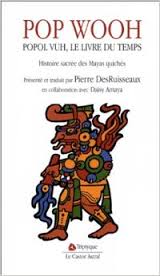 It is not yet known if the object exploding in the Great Lakes, that now we will call object GL, impacted over the iced surface or exploded at some height. We do not know its size or the energy of the explosion. The object might have had a few km size with energy possibly up to a billion MT, megatons. What we describe would apply for sufficiently energetic events, albeit a full modeling of the event is yet to be done. The effect that we consider is that the explosion would not only melt a large amount of ice, of order possibly several thousand cubic km, but would vaporize and ionize it. Ionizing water takes energy which is then released with the cooling of the water, with emission of energy in form of light. The heated and ionized water would arise to the sky, in the form presumably of a very high column, that would later expand, possibly taking the mushroom form typical for nuclear explosion. The height of the column is a function of the energy and other parameters, whose calculation is no trivial matter. If the column would reach several hundred km, or possibly even over one thousand, then the light emitted when the water molecules would reform might have reached over distances of many thousand km. We may even consider the possibility that such a light would have reached well over the Atlantic. In such a case if the event took place during the Old World night, the night sky would have been strongly illuminated, a very surprising event never experienced before or after; if it was day, the coming light might have been stronger than the sunlight, another similar unexpected event. Events to be easily attributed to the action of God.
It is not yet known if the object exploding in the Great Lakes, that now we will call object GL, impacted over the iced surface or exploded at some height. We do not know its size or the energy of the explosion. The object might have had a few km size with energy possibly up to a billion MT, megatons. What we describe would apply for sufficiently energetic events, albeit a full modeling of the event is yet to be done. The effect that we consider is that the explosion would not only melt a large amount of ice, of order possibly several thousand cubic km, but would vaporize and ionize it. Ionizing water takes energy which is then released with the cooling of the water, with emission of energy in form of light. The heated and ionized water would arise to the sky, in the form presumably of a very high column, that would later expand, possibly taking the mushroom form typical for nuclear explosion. The height of the column is a function of the energy and other parameters, whose calculation is no trivial matter. If the column would reach several hundred km, or possibly even over one thousand, then the light emitted when the water molecules would reform might have reached over distances of many thousand km. We may even consider the possibility that such a light would have reached well over the Atlantic. In such a case if the event took place during the Old World night, the night sky would have been strongly illuminated, a very surprising event never experienced before or after; if it was day, the coming light might have been stronger than the sunlight, another similar unexpected event. Events to be easily attributed to the action of God.
The second biblical statement to be re-evaluated is the mysterious sentence, in Genesis 1-2, that we read as follows in the French edition, Éditions du Cerf, Paris, 1994, of the Septuaginta, or Bible of Alexandria: le souffle de Dieu était porté au-dessus de l’ eau, or by our translating into English, the breath of God flew over the waters. Here we should note that the words souffle, breath are an attenuation of the original Hebraic word ruach, a feminine singular word appearing 389 times in Bible, as in the Companion Bible. It also means wind, winds, whirlwind (Ezek 1,4), air, tempest, blast... The Genesis sentence is clearly of difficult interpretation, giving to God a material quality, and quite a many proposals have been given for its proper meaning, whose presentation is outside the scope of this paper.
Our interpretation of the Genesis sentence is in the context of the first of the Mesoamerican catastrophes produced by the Great Lakes event. It is very simple, corresponding to a rare but natural event, without any direct relation with divinity. We have indeed as a consequence of the explosion the radial propagation of a hot wind, whose temperature decreases in complex way with the increasing of the distance from the event point, while its duration increases. For some calculations done in the context of an asteroid impacting over a continent, see Spedicato (10). The wind reached the territories in America south of the iced area, say some 2000 km from the explosion, with a temperature still high enough to ignite vegetation. The wind crossed over the Atlantic ocean reaching Europe and Africa with still a substantial speed and a not short duration, but not being hot enough to start vegetation fires. Notice that when Phaethon exploded over the Eider river in northern Germany leading to the Deucalion flood, actually a complex tsunami, and allowing Moses to save himself by decreasing of few meters the level of the Red Sea in front to present Nuweiba, see again Spedicato (2010), the wind was felt by Moses to be warm, but not so hot as to burn people or vegetation. But such unusual wind, following the great light by some hours, was naturally related to the light phenomenon that was considered a divine action. It was clearly flowing from west, over the Atlantic, hence it was considered as some divine wind flowing over the waters. Real waters, real wind, but no Holy Spirit.
We now turn to the third sentence, that appears in particular at the beginning of St John Gospel, say, first in Greek, then in English, our translation
En arché en o logos kai o logos en pros theon
in the beginning there was the word and the word was near God
Again thousands of people have pored over the above sentence (and its continuation not given here), with many different interpretations. Bypassing such theological work – only Newton possibly read almost completely the corpus of the Greek and Latin fathers for his analysis of Trinity dogma established in Nicea council – we explain it in the context of the explosion over the Great Lakes.
It is well known that giant explosions, as by celestial objects or hydrogen bombs, generate a sound extremely powerful, propagating radially from the explosion points (disregarding effects that may be produced by mountains or other reasons). The sound consists of a mix of various frequencies. The higher frequencies are absorbed within a few hundred km, see the discussion in Rubtsov (2009) about the 1908 Tunguska explosion, while the longest distances, sometimes involving the sound completing several round trips of Earth, are realized by the lower frequency sounds. Remember that for human beings the highest frequencies are those realized for instance by the so called coloratura soprano (among them Lucrezia Agujari Bastardella in the 18th century, Adelina Patti in the 19th century, Lucia Popp in the 20th century, Maria Laura Martorana in the present century), while the lowest frequencies are produced by the bassi profondi, e.g. in the 20th century Luciano Neroni, Giulio Neri and Fiodor Scialiapin. That low frequency sounds can propagate and be heard at thousands km distance is well known from the animal worlds. Birds migrating from the Arctic to Antarctica seem to follows the low frequency sounds produced by the action of sea waves against the coasts, and sperm whales use low frequency sounds to find their mate at distances over one thousand km.
From the above we can assume that the sound of the explosion on the Great Lakes reached the Old World after several hours being depleted of the highest frequencies. It was probably a rumbling low tone sound more common in old men than in young men; a sound interpreted as a voice of an old man, muttering something not understandable by the common people, a voice that possibly came again and again, always with diminished volume. An unusual and mysterious sound, that was probably interpreted as some god speaking.
So the Old World may have witnessed within a span of a few hours three unusual very impressive phenomena: a very intense light, an unusual wind, an unusual sound-voice. Three events that were remembered till Moses time, so for a span of almost ten thousand years, and gave food for thinking to generations of interpreters of divinity.
Acknowledgements:
This work would never have appeared without the information kindly provided by Leory Ellenberger, to whom thanks are given.
References:
Childress D., Le città perdute di Atlantide, Europa antica e Mediterraneo, Hera, 2004
Craveri M., Miti e leggende del Popol Vuh, Bompiani, 1998
Gillette D., Il segreto dello sciamano, Mondadori, 1997
Firestone R:B:, West A., Kennett J.P. et al, Evidence for an extraterrestrial impact at 12.900 years ago that contributed to megafaunal extinctions and the Younger Dryas cooling, Proc. Natl. Acad. Sci. USA, 104, 41, 16016-21
Kloostermann J., The Usselo Horizon, a worldwide charcoal-rich layer of Alleröd age, in Proceedeings of Symposium on New Scenarios of Evolution of Solar System, Bergamo University, Notarpietro A. and Spedicato E. editors, 1999
Lerner E., The Big Bang never happened, Vintage Books, 1992
Rubtsov V., The Tunguska mystery, Springer, 2009
Spedicato E., Atlantide e l’Esodo, Platone e Mosè avevano ragione, Aracne, 2010
Spedicato E:, Grandi numeri nelle cronologie asiatiche, una chiave di lettura, Quaderni Asiatici 93, 93-112, 2011
Spedicato E., From Nibiru to Tiamat, an astronomic scenario for earliest Sumerian cosmology, CIRPET conference, October 2012, San Marino
Spedicato E., On possible relations between the Giza pyramids and three sacred mountains in Asia, Quaderni Asiatici 101, 153-172, 2013
Spence L., The history of Atlantis, Adventures unlimited press, 1927 (2008 reprint)
Townsend R., Gli Aztechi, Newton Compton, 2007
Van Flandern T., Dark matter, missing planets and new comets: paradoxes resolved, origins illuminated, North Atlantic Books, 1999
Zapp I. and Erisson G., Le strade di Atlantide, Piemme, 2002

